Welcome to a new issue of the Journal of Runic Studies, the premier Malkioni publication for studies into the nature of Glorantha. If you haven’t subscribed yet, please consult with the spirit bound to the appropriate electronic page.
There hasn’t been a Glorantha Initiation Series episode this month… my apologies! I was too busy with too many things and didn’t have time to do the audio editing. Rest assured that we have a few interviews already recorded, just waiting to be cut up in a DAW, and we have many other people patiently waiting for me to schedule something with them (if you’re one of them, again, my apologies!)
Chaosium News

Here are this week’s Chaosium news!
Basic Roleplaying, Universal Game Engine
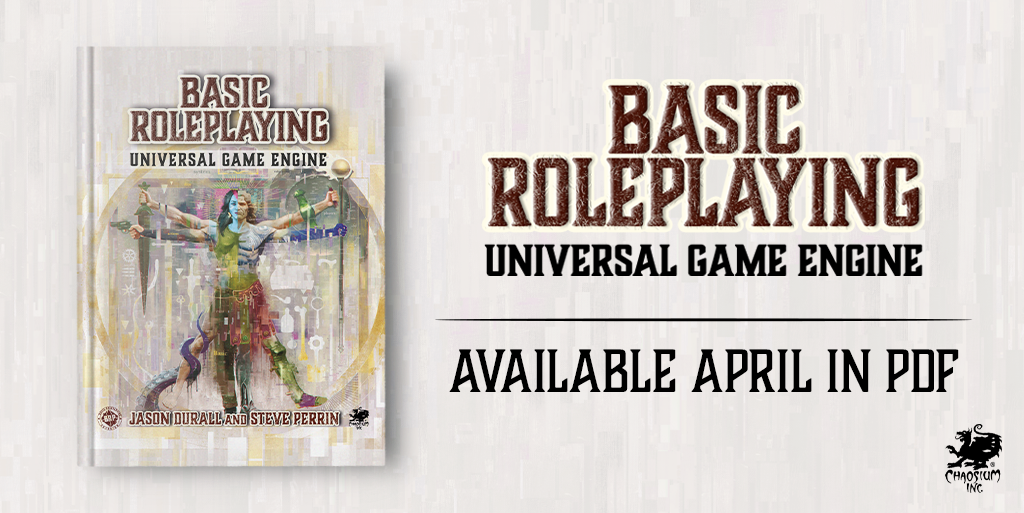
Fresh off the press, Chaosium has announced a new version of their venerable Big Gold Book, which we mentioned last week is now available in print-on-demand:
This release serves as an update to the core BRP system. Under the new Open RPG Creative License (ORC), game creators are free to use the BRP rules engine to develop their own games, royalty-free and without further permission from Chaosium.
The Big Gold Book was released as a generic system to be used by gamers at their own table, i.e. it didn’t include a license to re-use its text and terminology in other products. This new version, however, looks like it’s meant for creators, since it is released under Paizo’s ORC license. As such, I expect to see three types of changes in this book compared to the Big Gold Book:
- The removal of mechanics that they don’t want to see in derivative products,
- The addition of generic versions of the mechanics designed for Chaosium’s latest games (RuneQuest Glorantha, Call of Cthulhu 7th edition, Rivers of London, maybe even Lords of the Middle Sea),
- Updated rules and texts, a few new illustrations, etc. (including, of course, the ORC license)
Of course, 1 and 2 above sound sort of contradictory but, to clarify, I expect for instance to see CoC7e-inspired rules like percentile characteristics, but not pushed rolls. This area was a bit murky under Chaosium’s previous license, so I hope this new edition of BRP clarifies things.
Worldbuilding Too Much?
This interview with John Wick isn’t directly related to Glorantha (although of course it gets referenced), but it has a lot of relevant topics to your gaming.
Jonstown Compendium

The Jonstown Compendium is Chaosium’s community content program for all Gloranthan games, hosted on DriveThruRPG. Disclaimer: all the relevant links are affiliate links that hopefully will let us cover some of the hosting and maintenance costs for the website and podcast! Thanks for using them!
Duckpac in Print
The first three volumes of Duckpac, the sourcebook for the best Gloranthan species, are now available in print-on-demand!
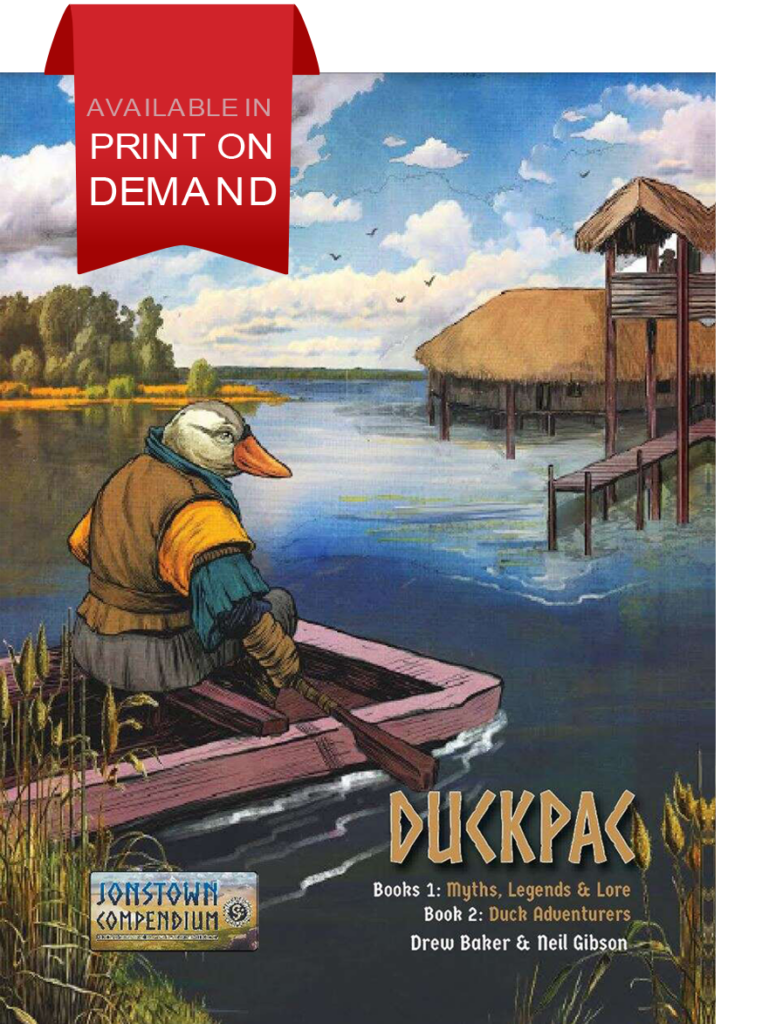
Volumes one and two are combined in one book (although, confusingly enough, you will only get the PDFs for volume one if you purchase it in dual-format… I understand why it’s like that, since it’s under the existing entry for volume one, but it’s no less confusing… get volume two’s PDFs here). This book contains all the background information on the Durulz, along with character creation rules, making it a great purchase for a player wanting to play a duck!
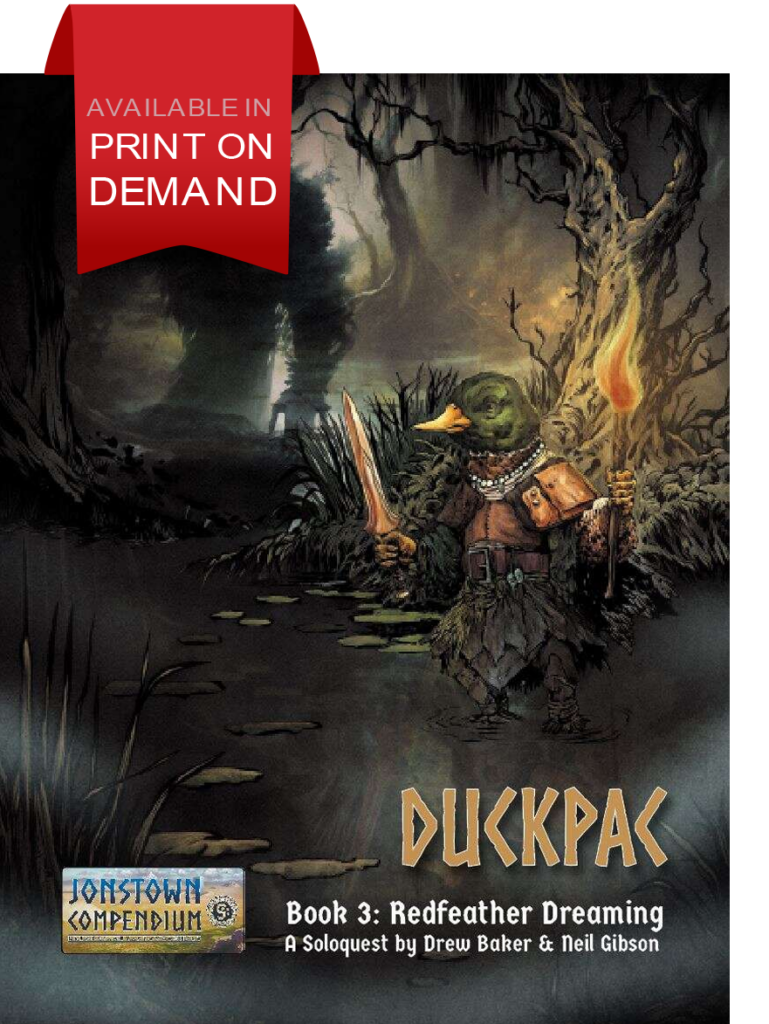
Volume three is the soloquest adventure, “Redfeather Dreaming”.
Note that the “player book” is a hardcover, while the soloquest is a softcover… is your OCD flaring up yet?
Jeff’s Notes

Jeff Richard, the current mastermind on everything Gloranthan at Chaosium, is often posting notes and thoughts on the RuneQuest Facebook group. Here’s our curated list from the past week. A partial archive of these sources is compiled on the Well of Daliath.
Human Sacrifice in Glorantha
A quick answer from Jeff about human sacrifice in Glorantha:
Human sacrifice is pretty rare among the Orlanthi. The tusk riders perform it, which is one of the reasons they are so disliked. Zorak Zoran is infamous for the deaths that take place during his ceremonies.
“Pretty rare among the Orlanthi” means that it does happen sometimes. The main references I can find for this come from the now retconned HeroWars and HeroQuest material. These point to the very small cult of Ana Gor, the goddess of human sacrifice for the Orlanthi. Some say she was created when the first death occurred, which would be when Humakt killed Grandfather Mortal.
As far as I can understand, her priestesses are the only ones who can, legally and magically and cosmically speaking, lead a human sacrifice ceremony without it turning into a Chaos-fest. Orlanth and Ernalda still don’t like this, and only a few cults (Humakt, Babeester Gor, Maran Gor, etc) tolerate it under very specific, yet unspecified, circumstances.
The interesting note here for Tarsh fanboys like me is that Ana Gor can be found incarnated on Glorantha as Sorana Tor, which you might know as the co-founder of the Kingdom of Tarsh with Arim the Pauper. They started the Twins Dynasty together with their kids in the mid-1300s. She reincarnated a few more times to marry and have children with other historical figures… including possibly Argrath himself. She might have reincarnated even more times, left undocumented, so feel free to have her show up in your game!
The Tusk Riders are of course horribly awesome — we have a whole episode about them. They routinely sacrifice people for the Appease Earth Rune spell, which keeps their giant tusker boars tame. Without it, they might go back to the old days when Ernalda was pissed at them and used a giant boar to try and wipe them out… or something. The history of the Tusk Rider is (on purpose) rather murky, and that’s why they’re awesome. Again, listen to the episode!
But the Tusk Riders also kill people to turn them into spirit magic servants using the Death Binding Rune spell. This lets them use a lot more magic than their otherwise low CHA allows (well, in terms of RuneQuest mechanics). This can potentially be considered a form of human sacrifice too.
Outside of the Orlanthi and the Tusk Riders, we can find some references to human sacrifice here and there in the Guide to Glorantha. These tend to be obscure old traditions of a specific place, rather that widespread traditions of a whole culture or nation. For example, the Cursed City of Central Fronela, the cities along the banks of the Red River in Northern Kralorela, the yearly sacrifices at Natha’s Well in the Lunar satrapy of Oronin, and more.
You can easily place human sacrifice anywhere in Glorantha by having a particularly nasty spirit demanding it as a form or propitiation.
Now Hon-eel loves blood sacrifices and has deadly gladiatorial contests to satisfy her.
Hon-eel indeed loves human sacrifices, as this seems necessary to preserve a connection to some of the old Moon Goddesses, in particular Natha and Gerra. I don’t know more than what the Glorantha Sourcebook says about them:
- Gerra used to be a nasty little Moon goddess who did nasty things. Now associated with the Dying Moon Phase, she apparently likes lots of people to do nasty things to themselves.
- Natha is a Moon goddess of balance, now associated with the Empty Half Moon Phase. She likes to do opposed things, bringing Life and Death, Light and Darkness, Peanut Butter and Nutella, and so on. People sacrifice themselves and each other to her because, well, I don’t know, people are crazy like that.
Cult Relationships
Jeff clarifies what the “hostile” cult relationship means:
Some people seem to assume that mutually hostile cults simply end up murdering each other if they have an opportunity. That’s not really the case – between hostile cults, relations are strained, and the historic tension complicates peaceful dealings. There are difficult moments when hostile cults meet.
Remember that there’s a worse relationship type than “hostile cults”, and that is “enemy cults”. Funnily enough, as far as I can tell, this relationship is explained in the rulebook, but none of the core cults are actually enemies. At least I can’t find any “E” in that table page 311.
If you go check out the old Cults of Prax, however, you’ll find some enemy cults: Zorak Zoran is an enemy of Yelmalio, the Seven Mothers are enemies of Zorak Zoran, and Aldrya and Zorak Zoran are enemies of each other.
Remember that the cult compatibility table is not symmetrical! So while Yelmalio really really hates Zorak Zoran, Zorak Zoran is merely “hostile” towards it. I’m reminded of this Mad Men scene.
The Seven Mothers and Orlanth cults are mutually hostile. They can co-exist, but that co-existence is fraught with tension that sometimes spills over into violence. More often it involves the cults deliberately tuning the other out, refusing to interact with each other, segregating into separate communities, and that sort of thing.
In the cities of the Lunar Provinces, the Orlanth cult is discouraged by the ruling Seven Mothers cult, but that does not mean that there are bands of soldiers stopping the rural population from worshiping Orlanth. The Lunar Empire simply doesn’t possess the resources to do that.
There are indeed a lot of ways that to express hostility besides outright violence. Everyday racism, institutional or systemic prejudice, and biased representation are but a few ways this hostility can materialize. This is the same as with the Hate Passion, which totally doesn’t necessarily mean you have a 60% chance of wanting to kill someone.
The Seven Mothers cult can do a lot of things to “discourage” Orlanth worship without having to reach for armed soldiers. They can build tourist hotels where sacred Storm sites are (the view is great from up here!), raise taxes on Orlanthi temples (I’m sorry but your Summons of Evil rituals often cause material damages and we need to cover those costs), create discriminating rules for common services in town (your beard must be this short to get into bathhouses: it’s just good hygiene, and also our drains kept getting clogged), and so on… which, in turns, might give you ideas for fun adventures!
A Single Community of Gods
Some people were asking about the views of one pantheon’s worshipper towards another pantheon. Jeff replies by quoting Amanda Podany’s “Weavers, Scribes, and Kings“:
“Suppose a priestess had arrived in Uruk, having traveled from Northern Mesopotamia, or Iran, or even Anatolia or Egypt. Even then she would not have doubted the power of Inana. Back at home, this goddess probably had a different name, or she might not even been worshiped at all, but this didn’t make Inana a false god in the mind of the visiting priestess. No gods were false; all were members of a single community of gods that extended to all lands. They could not be separated from the world they controlled, and the products of the world all existed primarily to satisfy their needs.”
So in the ancient polytheist world, and in Glorantha, there’s no such thing as denying the existence of another person’s gods — that’s a concept that monotheist religions like Christianity popularized. You maybe question the power of another person’s god, especially in relation to yours, but both gods, and many others, exist almost as a matter of fact. Although don’t take it too far:
Note that this isn’t henotheism. You have a special connection with A deity, but that deity is not a supreme god. Not even Orlanth or Yelm makes such claims.
I’m not sure if henotheism implies anything about your god being superior to the others, but you get the idea. Jeff expands a bit on what it means in Glorantha, including:
People can and do worship all the deities that are useful to worship – but can only wield the magic of that deity they have a deep connection with through initiation. That is a much deeper and more intimate connection than merely lay worship, and few people bother with being initiated to more than one deity.
Elsewhere on Arachne Solara’s Web
Not everything is about Glorantha, although most things are! Here are loosely relevant things that we found on the interwebs.
The Diets of Ancient Europe
Guest segment by Jörg
Dan Davis, author of a number of novels set in the Bronze Age, takes a deeper look back into prehistory and investigates the diet of these early humans. This gives a nice parallel for a number of Gloranthan cultures that are in this spectrum.
The Dragon Bones of Wadi al-Hitan
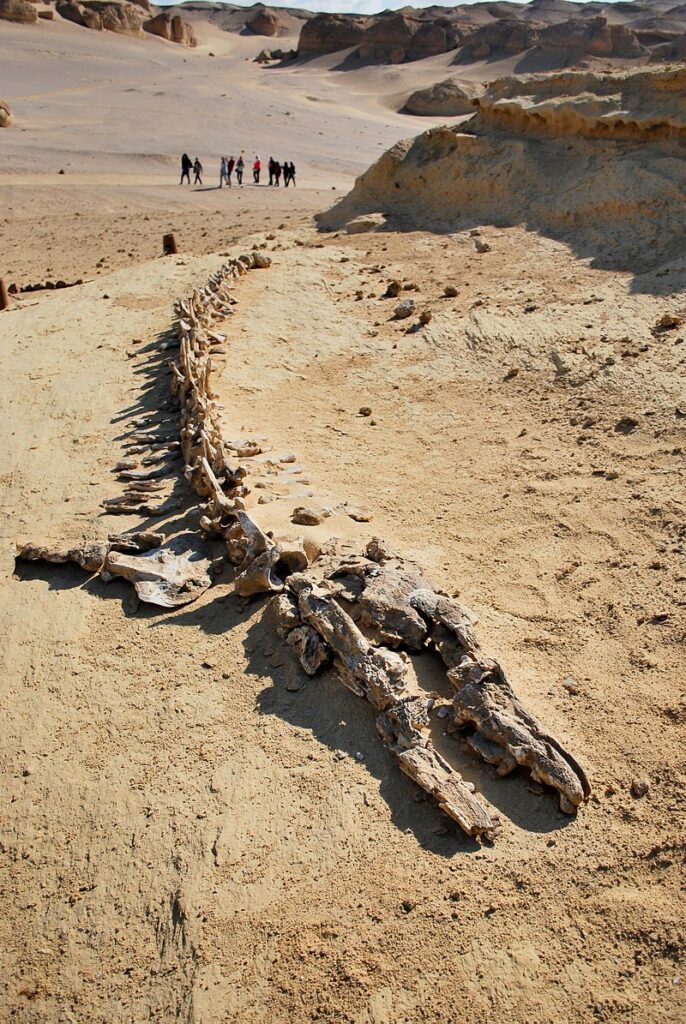
The Egyptian national park of Wadi al-Hitan has a whole bunch of fossils, including many of these dragon-looking things above. Of course they aren’t really dragons, and the name of the place gives it away if you speak Arabic: “Wadi al-Hitan” means “Valley of the Whales”.
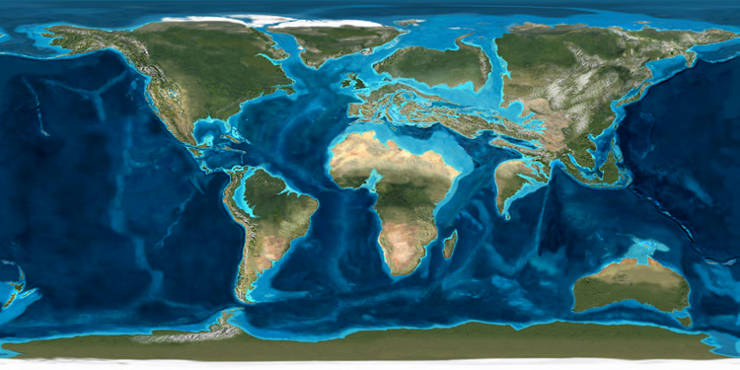
The place is littered with aquatic fossils from the Middle Eocene period (about 45 million years ago), when North Africa was underwater (see above). These fossils are incredibly well preserved, which makes them super useful for archaeologists… and this is where it starts to get weird.
The dragon bones you see in these pictures aren’t skeletons of any sort of whale. Most of them are from an older species called Archaeoceti… a whale with four legs. Because you see, aquatic mammals evolved from land mammals who went back into the oceans.
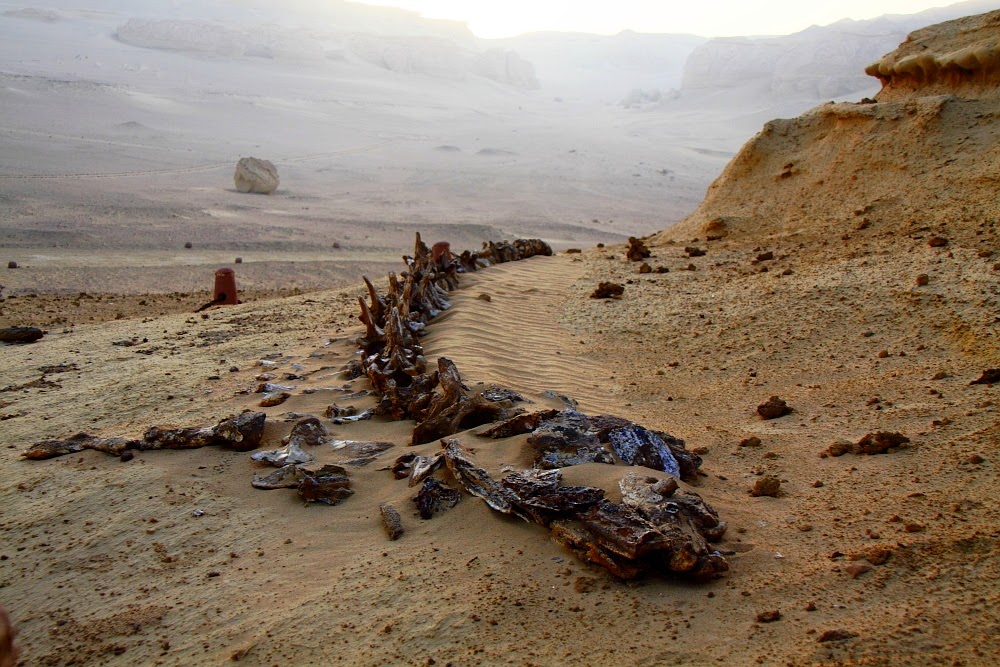
But since their discovery in 1902, the fossils of Wadi al-Hitan have tended to raise more questions than they’ve answered. While the hundreds of archaeocete skeletons provide a rare and valuable snapshot of whales in the final stages of losing their hind limbs and transitioning to a marine existence, evolutionary biologists are still left puzzled over the identity of the whale’s earliest ancestor.
Similarities in tooth shape led to the long-held belief that whales were related to mesonychids, carnivorous hoofed mammals that closely resembled wolves. It wasn’t until 2005 that a team of American and French scientists finally discovered the missing link between whales and their closest relative, the hippopotamus. This discovery, supported by another collection of cetacean fossils located in Pakistan, placed the whale in the different taxonomic group of artiodactyls, which includes such unexpected relatives as camels, pigs, and giraffes.
If you thought Gloranthaphiles were being funny when they say things like “horses are a kind of bird“, it’s nothing compared to evolutionary biologists being able to say things like “whales are a kind of giraffe“.
You see, this kind of shit places whales in the “even-toed ungulate” taxonomic order. That is, the animals that are, or descend from those that, bear weight equally on an even number of toes. Because obviously that’s a sane way to classify animals? I don’t know, people, I’m just discovering all of this. Of course you also have the “odd-toed ungulate” taxonomic order, because at least there is method in the madness. I can’t wait to classify worms and snakes as “zero-toed ungulates” or something.
Anyway, the second category (odd number of toes) includes all the equidae (horses and zebras and so on, who use just one toe), and rhinoceroses and tapirs (who use three toes). The first category, which we’re interested in here, includes a whole bunch of animals who use two toes: swine, sheep, goats, cattle, deer, llamas, hippopotamuses, and, of course, as promised, giraffes and whales. Oh and dolphins and other cetaceans of course, because there’s nothing I wanted to learn more today than a link between the majestic dolphin and the stupid goat.
So to celebrate this momentous occasion, and because we now have a link between orcas and wild boars, I present to you my newest Gloranthan creation: the Willy Riders, the aquatic equivalent of the Tusk Riders, but they ride Killer Whales! Because WHY THE FUCK NOT AT THIS POINT?

I hope you get the reference. Plus, if your adventurer is scared of them, you can say they give you the willies.

Anyway, enough of this nonsense. Wadi al-Hitan is a UNESCO World Heritage Site and you can technically visit it, but from what I understand it’s a bit hard to get to so it doesn’t receive that many tourists every year so far.
Thank you for reading
That’s it for this week! Please contact us with any feedback, question, or news item we’ve missed!


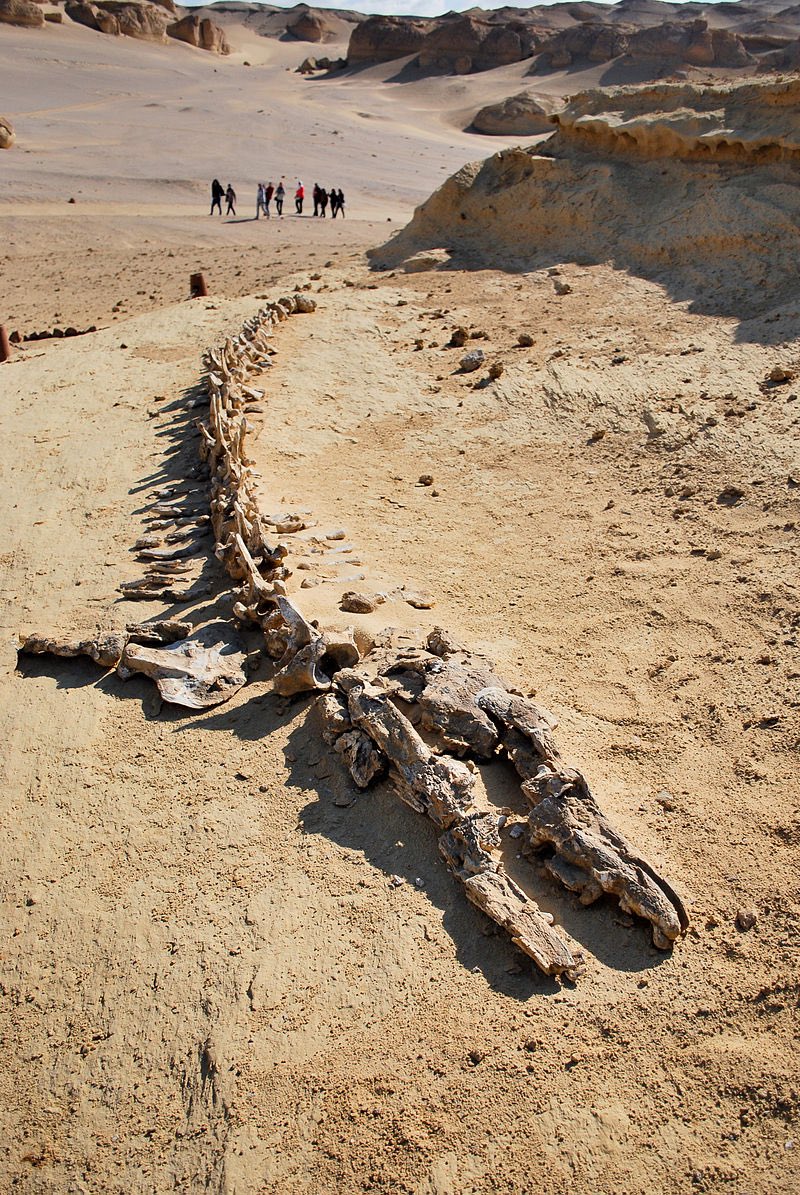
One comment on “Journal of Runic Studies 92”